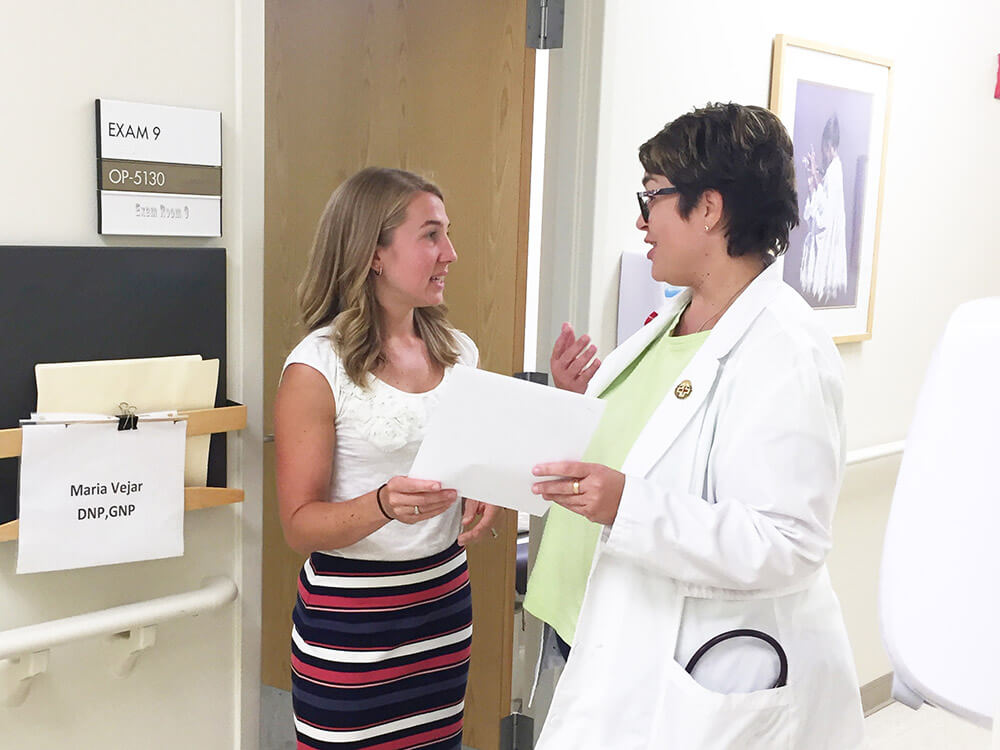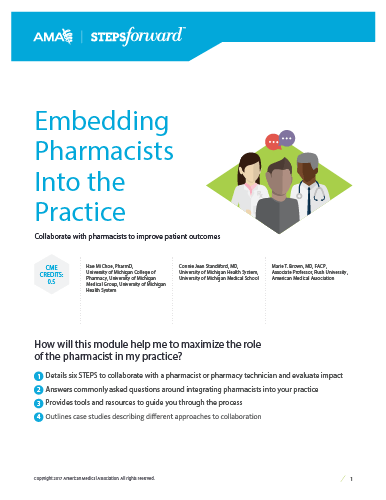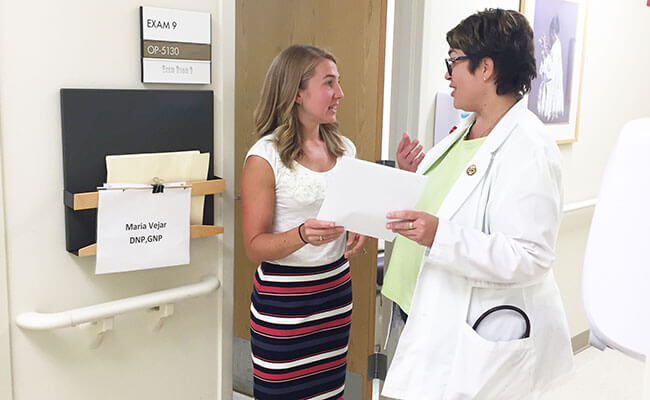“From 1999 to 2009, we had two other practices adopt my practice model. Then in 2009, when the Patient-Centered Medical Home was introduced to the University of Michigan Medical Group and Blue Cross Blue Shield of Michigan incentivized our health system to develop this team-based care model, I used that opportunity to expand our program across all primary care sites,” Choe said. “Then BCBSM approached me and asked if I’d be interested in scaling our model outside of our health system, across the state. That came with the creation of Michigan Pharmacists Transforming Care and Quality Initiative. I was financially supported by BCBSM to work with physician organizations around the state to emulate our practice model. We now have pharmacist programs similar to ours in 21 of 42 physician organizations across the state.”
Stepping outside of academic walls and joining with other organizations on a similar mission showed Choe how great the need was for pharmacists in community physician practices and gave her a new appreciation for what pharmacists can do. She used her experience to craft the module, detailing six steps to collaborating with pharmacists, answering commonly asked as well as murkier questions surrounding integrations, providing downloadable tools and resources, as well as outlining case studies describing different approaches toward collaboration for inspiration.
The module may be geared toward physicians, but its content provides direction and support for pharmacists and colleges of pharmacy looking to integrate, too. “Faculty members who are charged with developing a clinical practice in ambulatory care so that they can provide innovative practice sites for their students during their clerkship rotations can certainly reference this module to gain insights into practical steps to take and tools to use to start the practice,” Choe said. “Students who have been trained and exposed to this type of innovative model could then go out when they graduate and replicate and scale that type of practice, so I think it’s kind of like planting the seed.”
Striving to prepare pharmacists to run a productive practice in outpatient clinical environments, Choe created what she calls a crash course mock clinic that puts pharmacists right in the hot seat, in front of simulated patient instructors, trying to reconcile what patients say versus what physicians’ notes indicate, exposing them to elements that are critical to run an efficient clinic. She hopes colleges as a whole put appropriate emphasis on ambulatory or community-based care in their curriculum and would like to see a united vision for training students to service this “burning need.”
Extending a Physician’s Reach
The Ohio Northern University HealthWise program started as a wellness clinic for employees. Under Director Dr. Michael Rush, assistant clinical professor of pharmacy practice at the ONU College of Pharmacy, HealthWise has grown to become the clinical brand for the college, expanding services to include a retail community pharmacy, medication therapy management call center, drug and health information call center and a mobile health clinic that travels to rural, underserved areas providing access to healthcare through free screenings, health education and care coordination.
But in the beginning, when HealthWise was only a wellness clinic, one physician took notice. He was pleased with the results he was seeing in his patients, who were also ONU employees going to the clinic, so he reached out to the college and asked if they could work with him a few days a week to provide care for his patients with diabetes.
That was 2010, the beginning of the college’s partnership with the family medicine practice. Rush and the collaborating physician integrated pharmacists into the practice following the process that Choe laid out in her STEPS Forward module:
Decide how the practice can benefit from including a pharmacist.
The pharmacist complements the physician practice, focusing on patient education; medication use to prevent, cure and manage disease; and improving patient outcomes. Many publications demonstrate the improved outcomes for chronic diseases when pharmacists collaborate with physicians.
Identify the roles pharmacists can have in a physician practice setting.
These include assessing patients by gathering accurate medical and medication histories; consulting with physicians to create disease management plans; educating patients about their health, disease and medications; and empowering patients to take responsibility for their own health through knowledge and support. Pharmacists bring value in managing medication therapy for patients with chronic diseases, such as high blood pressure, diabetes, and asthma or COPD. Pharmacists also monitor patient progress in between office visits to help patients meet therapy goals and adhere to treatment. Patients with chronic disease who reach treatment goals for those diseases help to improve the quality ratings of the practice and increase practice reimbursement.
Find your pharmacist or pharmacy technician match.
Physician practices that are interested in collaborative relationships with pharmacists can turn to schools or colleges of pharmacy or partner with hospitals or community pharmacies to identify clinicians. Although Choe’s model is one in which pharmacists are embedded in the medical practice, other models include physicians collaborating with pharmacists who are not located at the practice but may be at hospitals, community pharmacies or other clinical care settings in the community.
Prepare and set expectations for your team and patients.
It’s important to establish a workflow in the practice so that patients receive care from the appropriate healthcare provider without experiencing long wait times or appointment times.
Determine the resources the pharmacist needs and the impact on the physician’s workflow.
Common needs for a pharmacist incorporated into a medical practice include space for appointments with patients; access to the electronic health record and billing and scheduling systems; access to drug information resources; and private space for consultation with physicians.
Measure impact.
The practice can track health outcomes, provider and patient satisfaction with the pharmacy service and changes in health literacy. For example, in the family medicine clinic the team tracked laboratory data and found improvements for patients with diabetes in hemoglobin A1c concentrations and blood glucose concentrations. Patients also expressed that they felt more comfortable managing their condition after working with the pharmacist.



